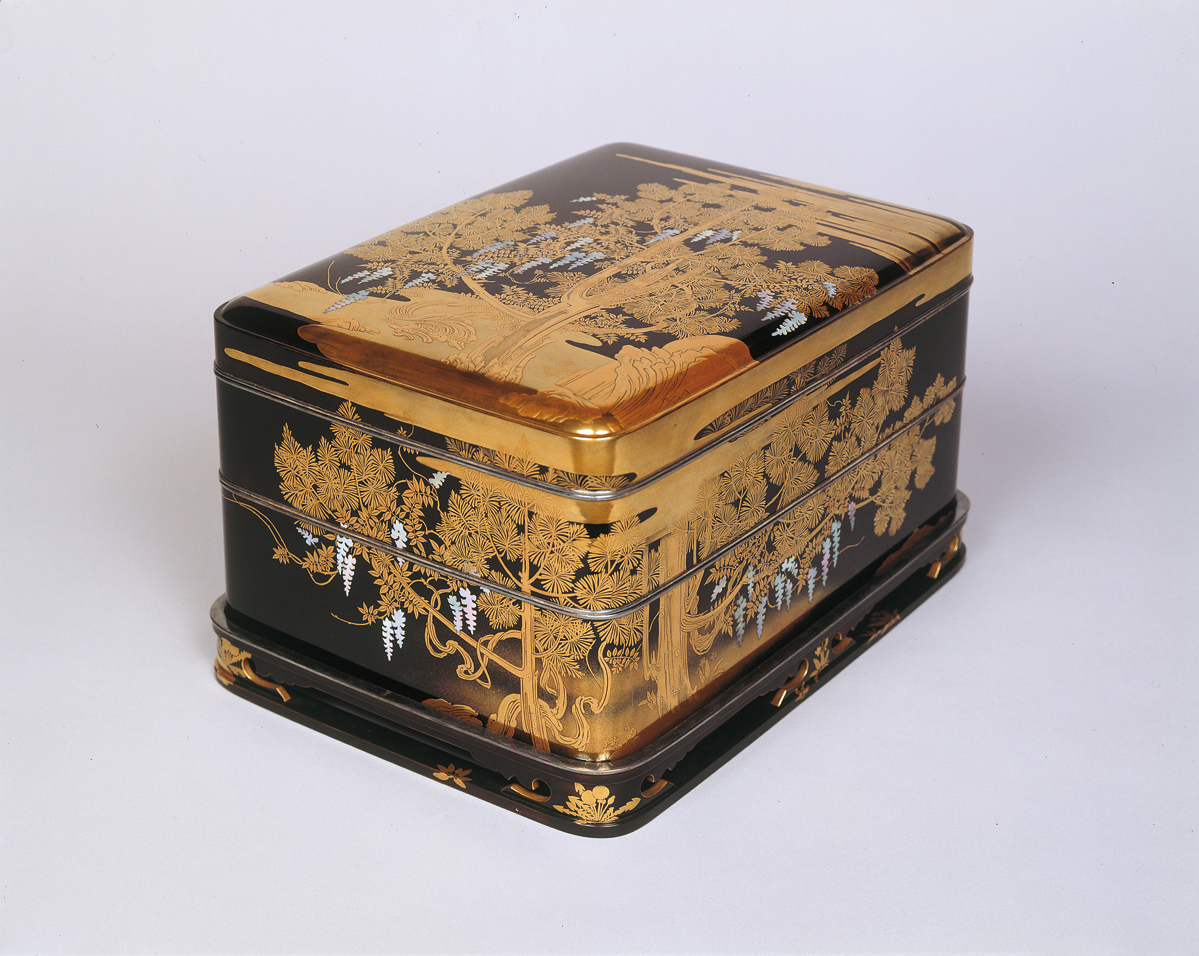The deluge of Western culture entering Japan from the Meiji Era (1868-1912) brought new concepts distinguishing art and craft. The word "bijutsu" (art), was first coined in 1872, making distinctions that were not inherent in earlier periods. In the European canon, "art" meant painting, sculpture, architecture, music and poetry, and "craft" included lacquer, dyeing, weaving, embroidery and ceramics. Lacquer, in particular, became culturally devalued, and in the early Meiji Era, it looked as though it would die out.
When the Emperor made his first "visit" from Kyoto (then the imperial capital) to Tokyo, nobles and merchants moved with him creating a patronage vacuum in which many were forced to give up their livelihoods. Daily items were no longer ordered by the Imperial Court, and the collapse of the samurai class, the largest consumers of daily lacquerware, such as tableware, furnishings and stationery, left the lacquer industry in disarray. Disinherited lords became impoverished and patronage constrained.
With domestic collapse, production turned toward export, a tradition that dates back to the 16th century, as evidenced by the collection of Marie Antoinette, and the later 20th-century Swiss collector Ugo Alfons Casal, who amassed a collection of over 4,000 pieces. In 19th-century Britain, lacquer was referred to as "japan," in the way porcelain is still referred to as "china."



















With your current subscription plan you can comment on stories. However, before writing your first comment, please create a display name in the Profile section of your subscriber account page.